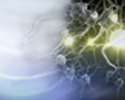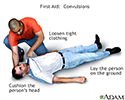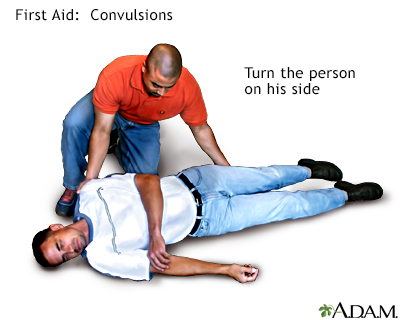Bilateral tonic-clonic seizure
Seizure - tonic-clonic; Seizure - grand mal; Grand mal seizure; Seizure - generalized; Epilepsy - generalized seizureBilateral tonic-clonic seizure is a type of seizure that involves the entire body. It is also called grand mal seizure. The terms generalized seizure, convulsion, or epilepsy are most often associated with bilateral tonic-clonic seizures.
-
Causes
Seizures result from overactivity in the brain. Bilateral tonic-clonic seizures may occur in people of any age. They can occur once (single episode). Or, they can occur as part of a repeated, chronic illness (epilepsy). Some seizures are due to psychological problems (psychogenic or non-epileptic).
-
Symptoms
Many people with generalized bilateral tonic-clonic seizures have one or more symptoms such as:
- Vision, taste, smell, or sensory changes.
- Hallucinations.
- Dizziness before the seizure. This is called an aura.
Some people have a focal seizure (only affecting one part) that becomes a bilateral tonic clonic seizure.
The seizures often result in rigid muscles (tonic phase). This is followed by violent muscle contractions (clonic phase). Other symptoms that occur during the seizure may include:
- Biting the cheek or tongue
- Clenched teeth or jaw
- Loss of urine or stool control (incontinence)
- Stopped breathing or difficulty breathing
- Blue skin color
After the seizure, the person may have:
- Confusion
- Drowsiness or sleepiness that lasts for 1 hour or longer (called the post-ictal state)
- Loss of memory (amnesia) about the seizure episode
- Headache
- Weakness of one side of the body for a few minutes to a few hours following seizure (called Todd paralysis)
-
Exams and Tests
The doctor will perform a physical exam. This will include a detailed check of the brain and nervous system.
An EEG (electroencephalogram) will be done to check the electrical activity in the brain. People with seizures often have abnormal electrical activity seen on this test. In some cases, the test shows the area in the brain where the seizures start. The brain may appear normal after a seizure or between seizures.
Blood and urine tests may also be ordered to check for other health problems that may be causing the seizures.
Head CT or MRI scan may be done to find the cause and location of the problem in the brain.
References
Abou-Khalil BW, Gallagher MJ, Macdonald RL. Epilepsies. In: Jankovic J, Mazziotta JC, Pomeroy SL, Newman NJ, eds. Bradley and Daroff's Neurology in Clinical Practice. 8th ed. Philadelphia, PA: Elsevier; 2022:chap 100.
Leach JP, Davenport RJ. Neurology. In: Ralston SH, Penman ID, Strachan MWJ, Hobson RP, eds. Davidson's Principles and Practice of Medicine. 23rd ed. Philadelphia, PA: Elsevier; 2018:chap 25.
Thijs RD, Surges R, O'Brien TJ, Sander JW. Epilepsy in adults. Lancet. 2019;393(10172):689-701. PMID: 30686584 pubmed.ncbi.nlm.nih.gov/30686584/.
Wiebe S. The epilepsies. In: Goldman L, Schafer AI, eds. Goldman-Cecil Medicine. 26th ed. Philadelphia, PA: Elsevier; 2020:chap 375.
















